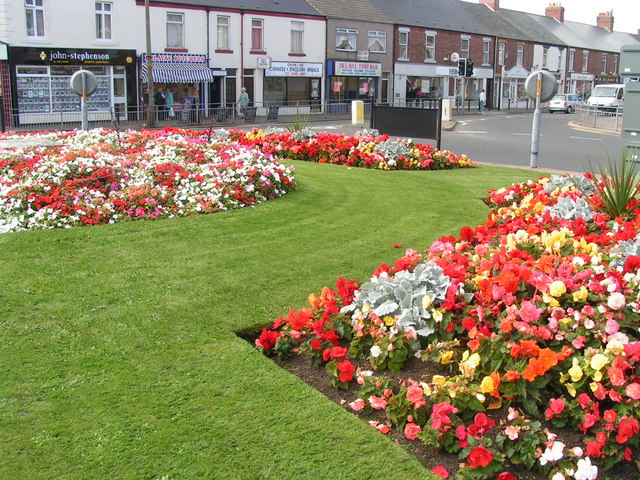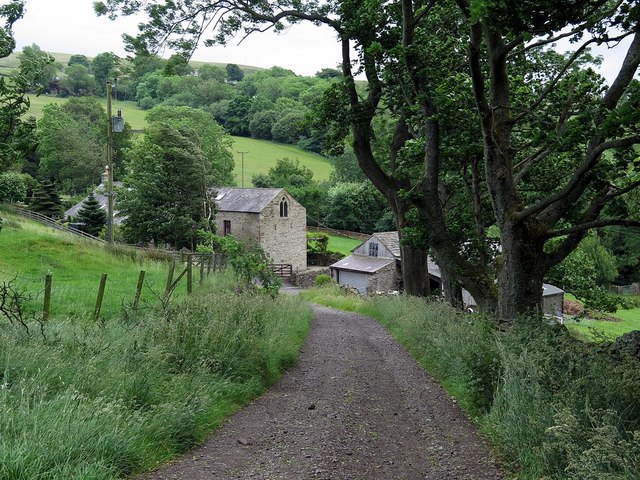Topics > Northumberland > Seaton Delaval > Seaton Delaval, 1855
Seaton Delaval, 1855
Extract from: History, Topography, and Directory of Northumberland...Whellan, William, & Co, 1855.
SEATON DELAVAL is a township and village in [Earsdon parish], the property of Lord Hastings, The area of the township is included with that of Hartley and its rateable value is £6,084. 12s. The population in 1801, inclusive of the hamlet of Whitridge, was 240; in 1811 322; in 1821, 240; in 1831, 271; in 1841, it had increased to 1,568; and in 1851, in consequence of the opening of a colliery it had attained to 2,726 souls. The ancient family of Delaval existed in this township from the time of the Norman Conquest, until the year 1818. This family was related to the Conqueror, by the marriage of Guy Delaval to Dionesia, niece of William, Sir Hendrick Delaval, second son of the above-mentioned Guy, was one of the principal standard bearers at Hastings. It appears that this family soon afterwards acquired extensive possessions in the north, for we find, that in 1121, Hubert Delaval, gave the tithes of Seaton, Callerton, and Dissington, to the priors of Tynemouth, and other members of the family were equally generous to the abbey of Hexham. According to Dugdale, some of this family held estates also in Yorkshire, and we discover the name of Gilbert Delaval among the twenty-four barons, sworn to see the Magna Charta, and the Charta de Foresta confirmed by the Pope. Eustace Delaval held Black Callerton, Seaton, Newsham, and Dissington in capite of Henry III for two knights' fees. Subsequently a great portion of the family estates was vested in William Delaval, of Benwell, but in 1450 one of the Whitchester family appears all the proprietor of a third part of the Manor of Seaton Delaval.
Sir John Delaval married Elizabeth daughter of William de Whitchester, by whom he had an only daughter and heiress, Elizabeth, who was espoused by John Horsley de Ulchester, who thereupon assumed the name and arms of Delaval, and his son James succeeded to the Delaval estate. One of his descendants, Robert Delaval, represented Northumberland in parliament during the reign of Charles II and was created a baronet in 1660, but after three successions, the title became extinct by the failure of the male line, and the estate passed to George Delaval, of South Dissington. He was succeeded by his son Edward, who married Mary, the daughter of Sir Francis Blake, of Ford Castle, by whom he had one son, Francis Blake Delaval, Esq., who died in 1752, and was succeeded by his son Sir Francis Blake Delaval, one of the gayest and most accomplished men of the age in which he lived. Dying without legitimate issue, in 1771, he was succeeded by his brother Sir John Hussey Delaval, who was created a baronet in 1761, and raised to the peerage, as Baron Delaval, in 1783. His lordship died without male issue, in 1808, at the advanced age of -eighty years, when his entailed estates were inherited by his brother, Edward Hussey Delaval, of Doddington. Edward Hussey Delaval was an excellent scholar, well versed in the classics, and conversant in most languages, both ancient and modern, but chemistry and experimental philosophy w-ere his favourite pursuits. He was a member of several royal and learned societies, and many of his discoveries and observations were translated into the French and German languages, and received the approbation of scientific men both at home and abroad. He died without issue, in August, 1818, aged eighty-five years, and was interred in Westminster Abbey. On his demise the valuable estate of Seaton Delaval became the property of Sir Jacob Astley, Bart. of Melton Constable, Norfolk, who was raised to the peerage in 1841, by the style and title of Baron Hastings.
THE VILLAGE of Seaton Delaval is situated about six and half miles north by west of North Shields. It consists of eight rows of cottages connected with the Seaton Delaval Colliery, which is worked by Joseph Lamb and Co. These cottages have all been erected since the commencement of the mining operations in 1837. Here is a Presbyterian Church erected in 1845. It is a handsome building of freestone, and will accommodate about 580 persons. Rev. Robert Henderson, minister. There is a day school attached to this church, Alexander Anderson, teacher. The Primitive and Wesleyan Methodists have also neat chapels here, both of which were erected in 1845. The Catholics have a temporary place of worship in this neighbourhood, but it is in contemplation to erect a suitable church as soon as possible. Rev. John Bradley, O.S.B., priest.
The noble mansion of SEATON DELAVAL HALL was destroyed by fire on the 3rd of January, 1822; the two wings only were saved by destroying the corridor which united them to the main body of the edifice. Previous to its destruction it was considered to be one of the most elegant mansions in the north of England. It was built by Admiral Delaval, from a design by the celebrated architect Sir John Vanburgh. The north front consisted of five stories of excellent masonry, ornamented with six Doric columns, surmounted by richly embellished entablatures, above which were elegant vases placed on pedestals, whence the attic story rose, having a grand pediment with a triangular tympanum in which were carved the arms of the family and various trophies. The apartments were all ornamented and finished in the most superb manner. The hall was paved with black and white marble, and the walls were decorated with arches, niches, recesses, and statues, the productions of the best Italian artists. Adjacent to this hall was a splendid saloon, which contained eight beautifully fluted Corinthian columns, besides numerous pilasters. This apartment opened into a beautiful Ionic portico. Indeed the whole pile appeared more like a royal palace than the country seat of a subject. The pleasure grounds are extensive, and great attention appears to have been bestowed upon them. Although so near the sea, the trees in the lawn are healthy, and have attained a considerable size, but in the sea-walk and where the plantations are narrow, they are stunted and poor. A fine obelisk, about half a mile south of the house, has been happily placed in the dead flat towards Tynemouth. These grounds are now used as a pleasure garden: and are much frequented by parties from Newcastle during the summer months. Mr. George Bell, lessee.
The old castle of Seaton Delaval occupied a site a little to the south-west of the modern mansion. Of this ancient structure the only vestige now remaining is the chapel, one of the purest and most perfect specimens of Norman architecture in the kingdom, the roof being the only part that has undergone any alteration. The western door is surmounted by six shields, charged with the arms of the Delavals. The arches at the entrance of the chancel are supported by "ponderous columns short and low," with plain heavy capitals, and wrought with double tiers of zig-zag ornaments. Here are two ancient tombs surmounted by recumbent figures of a crusader and his lady. The walls are decorated with pieces of old armour, tattered banners, and escutcheons. Service is performed here every Sunday afternoon, by the Rev. Henry Warkman. Adjacent to this chapel is a fine Mausoleum, erected by Lord Delaval in memory of his son, who died in his twentieth year. This monument is much admired for the simplicity and elegance displayed in its construction.
NEW HARTLEY, a hamlet in this township, is situated about one mile east of Seaton Delaval. Here is a small chapel, erected in 1852, the property of the Methodist New Connexion.
WHITRIDGE is another hamlet in this township, six and a half miles W.N.W. of North Shields, and two and a half miles west of Seaton Sluice.
Directory
POST OFFICE, Double Row, George Patterson, Postmaster. Letters arrive from Newcastle at 10 a.m., and are despatched thereto at 5-25 p.m.
|
Anderson Alexander, schoolmaster, Presbyterian Church School, Seaton Delaval Banks John, grocer, New Hartley Barrass Robert, butcher, New Hartley Bell George, market gardener, Seaton Delaval Hall Bell Joseph, shoemaker & saddler, Whitridge Bell J., gardener, Seaton Delaval Colliery Blenkinsop Thos. foreman smith, Quality row, Seaton Delaval Colliery Brown James, coal inspector, Quality row, Seaton Delaval Colliery Brown John, Esq. Seaton Delaval Hall Crawford Mr. George, Seaton Red House Davison Anthony, surgeon, Whitridge Dawson Jesse, teacher at Seaton Sluice; ho. Seaton Lodge Fenwick Barnabas, agent & cashier, Seaton Delaval Colliery; ho. Whitridge Farm Henderson Rev. Robert, Delaval Manse Jobling, the Misses- , Seaton Lodge Lamb Robert, resident colliery viewer South row, Seaton Delaval Colliery Lamb T. C. agent, Seaton Delaval Colliery |
Pringle James, drain tile maker, Whitridge Tile Works Pybourn John (late Thos. Straker), grocer and draper, Seaton Delaval Colliery Quarrie Andrew, overseer of the poor, Gloucester Lodge Quarrie Walter, schoolmaster, New Hartley; ho. Seaton Sluice Smith Charles, plate layer on the Blyth and Tyne Railway ; ho, Stable row Stephenson Robert, station master, Hartley Railway Station Storey James, butcher, Whitridge
Farmers Bower William, Avenue Head Crawford John, Look Out Crawford Ralph, Seaton Red House Rigg John, Lisdon Farm Thompson John, Seaton Lodge
Inns Ashley Arms, Ann Naisbit Hastings' Arms Inn, Thomas Bell, near the railway Station |
Notes
The hamlets Whitridge and Avenue End were subsumed into Seaton Deleval as it grew in the 19th and 20th centuries. Presumaby, Whitridge is the location of the Wheatridge area of Seaton Delaval (the spellings of place names often changed over time).
This extract from a map of 1769 (not from the 1885 directory) shows Whitridge and Avenue End highlighted, both now within today's Seaton Delaval:

Seaton Delaval Civil Parish (1866 - 1935)
Seaton Delaval, up to that point a township in the ancient parish of Earsdon, became a Civil Parish in its own right in 1866. This followed the Poor Law Amendment Act 1866, in which Church of England parishes, extra-parochial areas, townships and chapelries, became "civil parishes" which could set their own poor rate (tax).
Seaton Delaval Civil Parish was part of Tynemouth Poor Law Union, up to its abolition in 1930. In relation to local government, the parish was part of Tynemouth Rural District (1894 - 1912) and then Seaton Delaval Urban District (1912 - 1935); as well as being under Northumberland County Council at the county level.
Seaton Delaval Civil Parish was abolished in April 1935, with the vast majority of the area (2,518 acres, with a population of 5,529 in 1931) becoming part of the newly formed Seaton Valley Civil Parish. A smaller part of the old parish area (876 acres, with a population of 1,502 in 1931) became part of Whitley and Monkseaton Civil Parish.[1]

Co-Curate Page
Seaton Delaval Colliery (1838-1960)
- Overview Map Seaton Delaval Colliery was opened in 1838, located at what is now the industrial estate and wooded area by Double Row, between Seaton Delaval and New Hartley. The …














